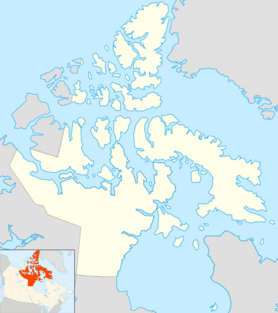Wager Bay facts for kids
Quick facts for kids Wager Bay |
|
|---|---|
| Ukkusiksalik Bay | |
| Location | Kivalliq Region, Nunavut |
| Coordinates | 65°30′N 89°00′W / 65.500°N 89.000°W |
| Type | Inlet |
| Etymology | Sir Charles Wager |
| Part of | Ukkusiksalik National Park |
| Primary outflows | Roes Welcome Sound |
| Catchment area | 28,551 km2 (11,024 sq mi) |
| Basin countries | Canada |
| Shore length1 | 93 mi (150 km) |
| Surface elevation | 51 m (167 ft) |
| Islands | Savage Islands, Paliak Islands |
| 1 Shore length is not a well-defined measure. | |
Wager Bay, also known as Ukkusiksalik Bay, is a long, narrow arm of the sea in Nunavut, Canada. It stretches far inland from the main ocean. This bay opens to the east into Roes Welcome Sound. This sound is located at the northwest end of Hudson Bay. The entire area around Wager Bay is part of Ukkusiksalik National Park.
Exploring Wager Bay's Past
Wager Bay was first explored and mapped in 1742. This was done by a navigator named Christopher Middleton. He was on an expedition to find the Northwest Passage. Middleton named the bay after Sir Charles Wager. His ship became stuck in the bay for three weeks. This happened because of thick ice in Roes Welcome Sound. Later, in 1747, another explorer named William Moor sent smaller boats to explore the very end of the bay.
The Geography of Wager Bay
Wager Bay is a long stretch of water that cuts through the tundra. The shoreline of the bay is about 93 mi (150 km) long. The land around the bay is about 51 m (167 ft) above sea level. Many small rivers flow into Wager Bay. These rivers include the Brown River and the Sila River. The bay collects water from a large area of 28,551 km2 (11,024 sq mi). Nearby lakes include North Lake, South Lake, Brown Lake, and Ford Lake.
See also
 In Spanish: Bahía Wager para niños
In Spanish: Bahía Wager para niños


